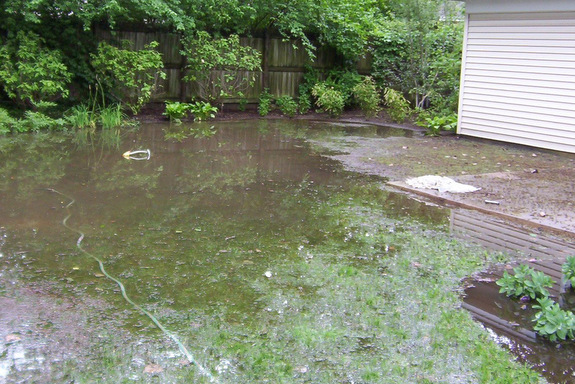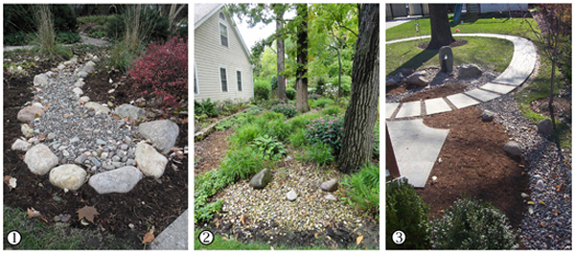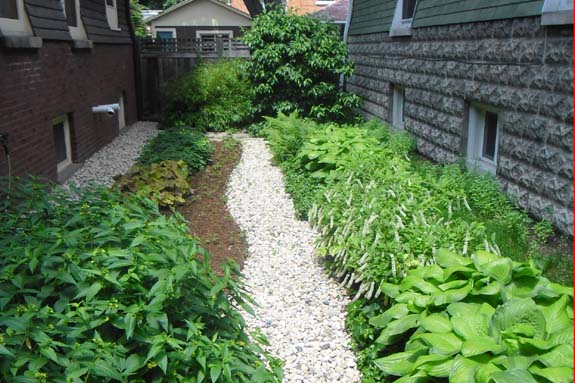
Rainwater management is a vital investment to alleviate the problems created by heavy rains and standing water.
April rains mean drainage problems for many homeowners. For both functional and aesthetic reasons, dry stream beds are gaining favor as a solution to this problem. They offer a refreshing, natural look in a garden, direct drainage during a rain event and provide sporadic irrigation to adjacent garden beds, providing a moist microclimate that make a wider variety of plants possible. Many municipalities are encouraging and even incentivizing their residents to install them as a more sustainable alternative. We can effectively direct water from downspouts away from the foundation of the house if there is enough change in grade. Creating a shallow swale, lined with stone, will help to divert water from the roof. The water will percolate into the ground instead of finding its way into the storm sewers, which often fill overcapacity.

1) Roof rainwater from a downspout exits in this swale and creekbed, which act as a rainwater holding reservoir. 2) A long, winding drystream bed, planted with wet-loving plants, directs water away from this home. 3) A gravel bed re-directs water from several downspouts along one side of a house to flow out a large stone water sculpture in the middle of this yard.
Installing a dry stream bed takes the skill of an engineer, the eye of an artist and the backbone of a seasoned laborer. If this system isn’t installed correctly, it may do more harm than good, and divert water in the wrong direction.
We line the swale with landscape fabric and then typically cover it with river rock in the 1-1/2-inch to 2-inch range, cobblestones and small boulders. Using locally available stone, typically rounded, of various shapes and sizes brings the natural geology of the region into the landscape. The larger rocks are placed on the edges of the stream where they help to channel the water and where they have the most visual impact. We like to create gentle curves in the stream beds, which reduces water velocity and gives a more natural appearance.

Situated between houses with downspouts and sump exits, a swale and dry stream bed flanked with water-loving plants directs rainwater away from the foundation of both homes.
Once all this is done, we install water-loving plants or plants associated with the edges of streams such as iris, sedges, ferns and itea.
If you are looking for a drainage solution that adds function, value and aesthetic beauty, change the course of your landscape and install a dry stream bed.
